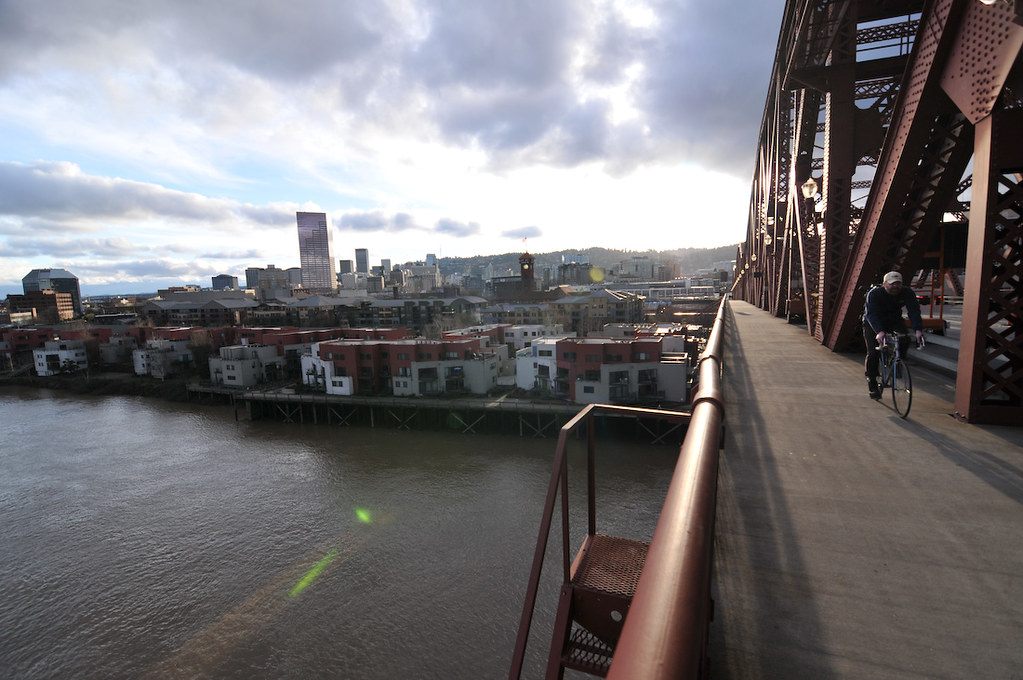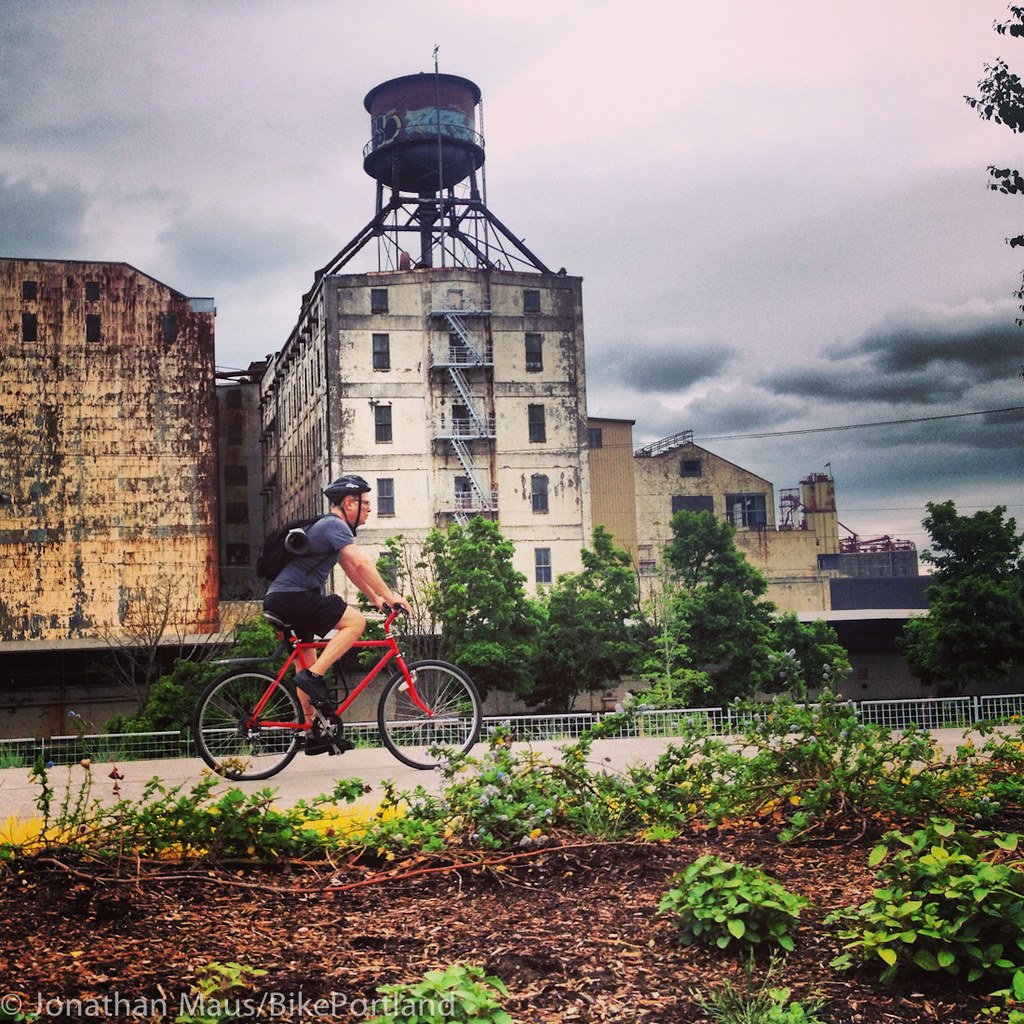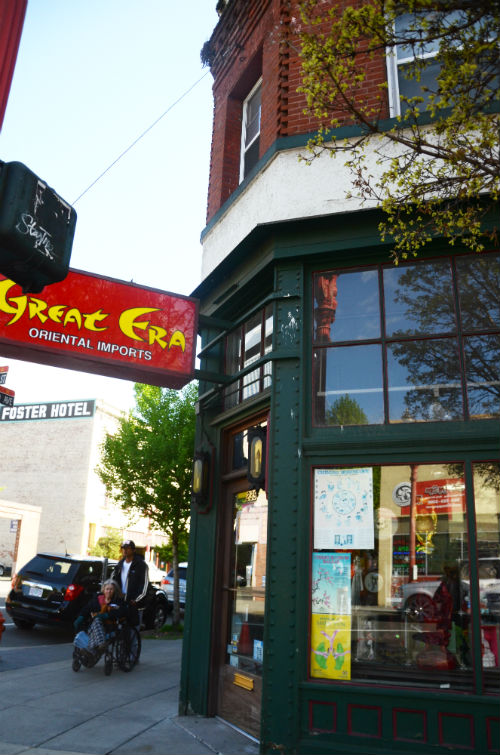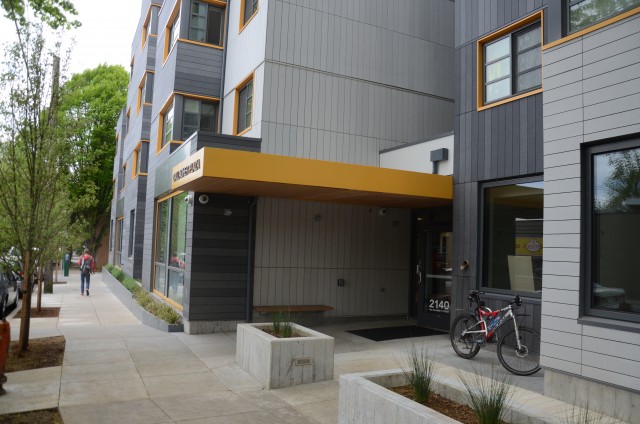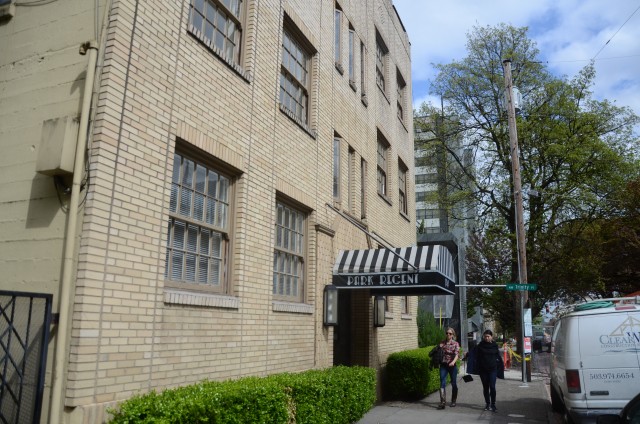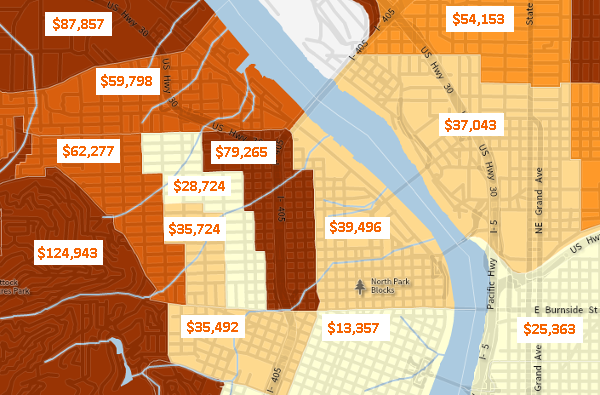
(2009-2013 data via Census Explorer)
Part of NW Portland Week.
Portland’s glittering Pearl District has about three times as many income-restricted units as the 82-acre New Columbia community in North Portland, Oregon’s largest affordable-housing development.
To be clear, this fact (first noted by Iain MacKenzie) doesn’t mean the Pearl has more poverty. Many of its 2,379 “affordable” units are targeted to people whose households make about 80 percent of the region’s median income, or $52,950 for a family of three — more or less middle class.
But before we get any deeper into NW Portland Week here at BikePortland, we should bust the myth that because there are many rich people in northwest Portland, there are no poor or middle-class people.
Take, for example, the neighborhood between 18th and 23rd, Burnside and Thurman: 85 city blocks, 6,485 Portlanders. One in four of them lives in poverty. Another 15 percent are in households making $100,000 or more per year. The other 60 percent are fairly evenly distributed in between.
That’s unusual. And the science is extremely clear: if you are going to be poor, a neighborhood with lots of non-poor people is probably the best place to be.
For all of Portland’s many deep and unsolved problems, income integration is something our city has actually done better at than most. Maybe that’s why the reality of northwest Portland is hard for so many people to understand: it is simultaneously one of the most desirable parts of town to live and a place where thousands of poor people manage to get by.
This isn’t to deny that east Portland is home to many more people in poverty, and in need of far more investment, than northwest Portland. Those things are true.
And it’s also not to claim that being poor in northwest Portland is pleasant. It can be very unpleasant.
“If you wanted to buy crack, step in human shit on the sidewalk, or line up around the block for services…Old Town’s your best bet,” said Carl Larson, who worked in Old Town for eight years as an employee of the Bicycle Transportation Alliance. “When people pull this simplistic ‘Equity = East Portland’ bullshit, they’re forgetting how much suffering and need there is in inner NW Portland. It’s right next to the Pearl but it’s a different world.”
Advertisement
Where do people who aren’t rich live in Northwest Portland? In buildings like the New Palace, built 1908, which rents 12 rooms at 3rd and Everett for under $481:
Or Gallagher Plaza at 21st and Kearney, built 1981, a Home Forward building that accepts federal housing vouchers to help pay for 85 one-bedroom apartments rented to people making up to half of median income:
Or maybe even the Park Regent at Everett and Trinity Place, built 1930, which is currently asking $1,195 for a one-bedroom:
The fact that poor people are scattered among middle-class and rich people in northwest Portland does not mean the area is just as deserving of investment as any other part of the city. But the false story that northwest Portland is simply a place of privilege has been unduly damaging. It’s been an albatross weighing down Portland’s bike share plans for years. It was the root of mayoral candidate Sho Dozono’s 2008 attack on his rival Sam Adams that put the Flanders Street Bridge — a supremely cost-efficient project that would have had a huge effect on northwest Portland transportation by now if it hadn’t been scrapped under pressure — on ice for the next decade.
Sometimes, it’s possible to help poor people and rich people at the same time. In fact, that’s a big part of what makes income-integrated neighborhoods — like most of Northwest Portland — such a great idea.
— Michael Andersen, (503) 333-7824 – michael@bikeportland.org
BikePortland can’t survive without subscribers. It’s just $10 per month and you can sign up in a few minutes.

